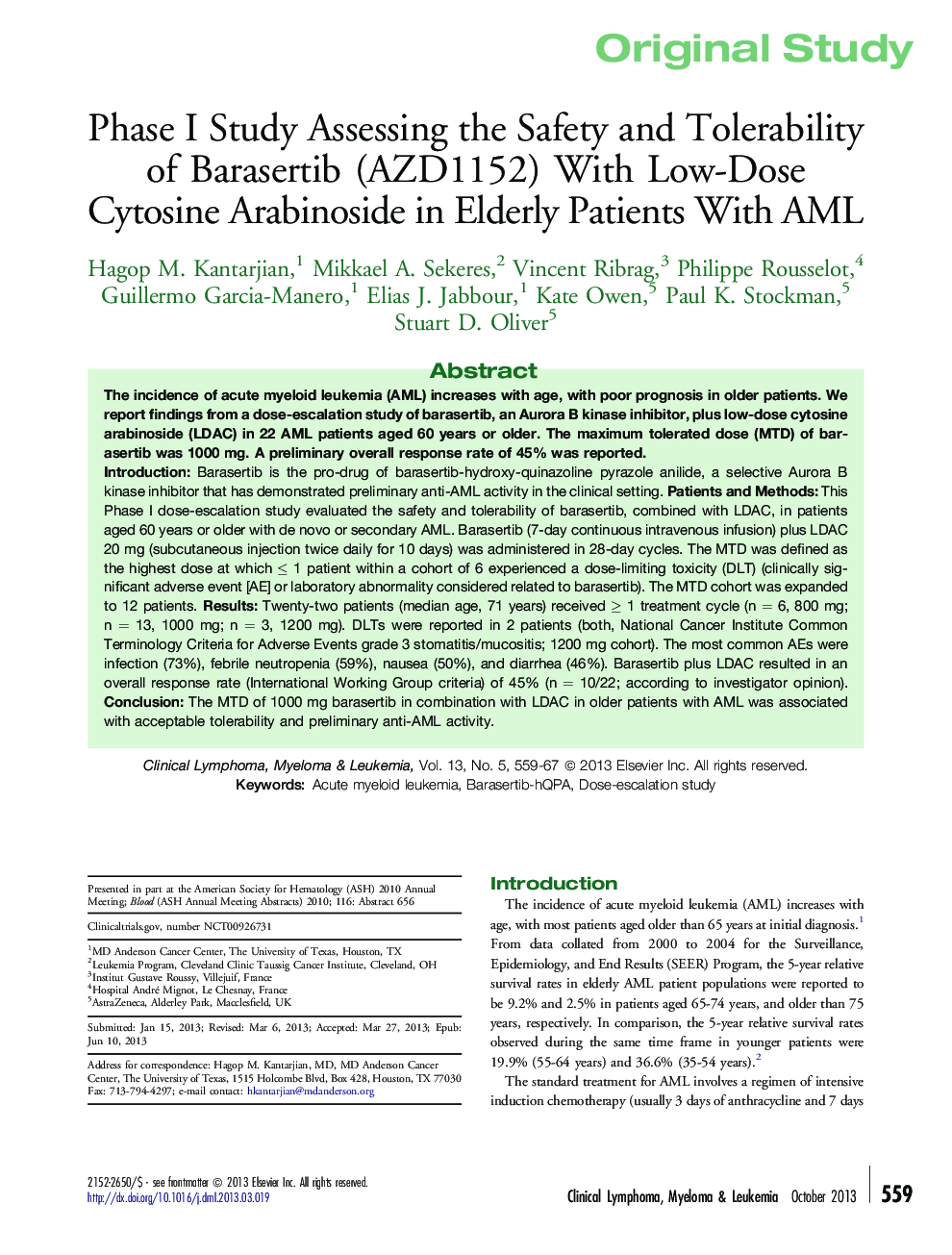| Article ID | Journal | Published Year | Pages | File Type |
|---|---|---|---|---|
| 2754721 | Clinical Lymphoma Myeloma and Leukemia | 2013 | 9 Pages |
IntroductionBarasertib is the pro-drug of barasertib-hydroxy-quinazoline pyrazole anilide, a selective Aurora B kinase inhibitor that has demonstrated preliminary anti-AML activity in the clinical setting.Patients and MethodsThis Phase I dose-escalation study evaluated the safety and tolerability of barasertib, combined with LDAC, in patients aged 60 years or older with de novo or secondary AML. Barasertib (7-day continuous intravenous infusion) plus LDAC 20 mg (subcutaneous injection twice daily for 10 days) was administered in 28-day cycles. The MTD was defined as the highest dose at which ≤ 1 patient within a cohort of 6 experienced a dose-limiting toxicity (DLT) (clinically significant adverse event [AE] or laboratory abnormality considered related to barasertib). The MTD cohort was expanded to 12 patients.ResultsTwenty-two patients (median age, 71 years) received ≥ 1 treatment cycle (n = 6, 800 mg; n = 13, 1000 mg; n = 3, 1200 mg). DLTs were reported in 2 patients (both, National Cancer Institute Common Terminology Criteria for Adverse Events grade 3 stomatitis/mucositis; 1200 mg cohort). The most common AEs were infection (73%), febrile neutropenia (59%), nausea (50%), and diarrhea (46%). Barasertib plus LDAC resulted in an overall response rate (International Working Group criteria) of 45% (n = 10/22; according to investigator opinion).ConclusionThe MTD of 1000 mg barasertib in combination with LDAC in older patients with AML was associated with acceptable tolerability and preliminary anti-AML activity.
